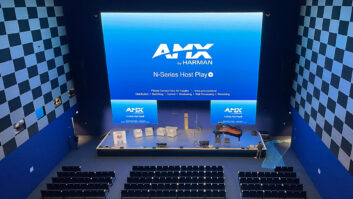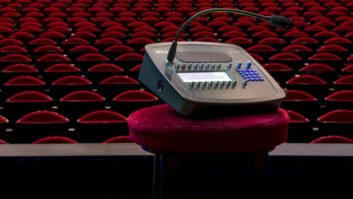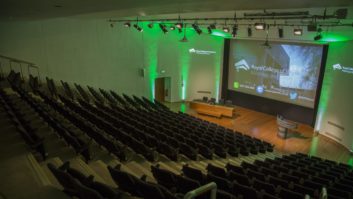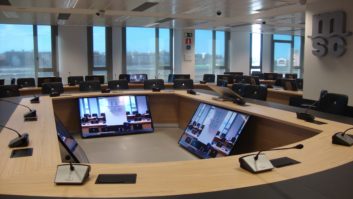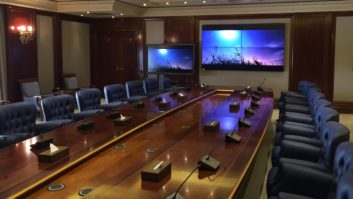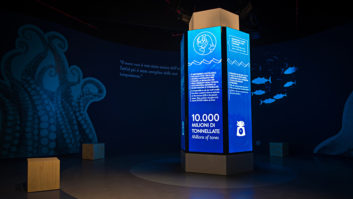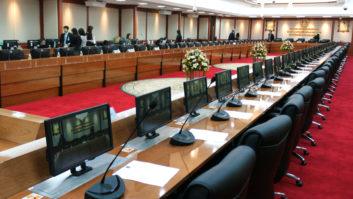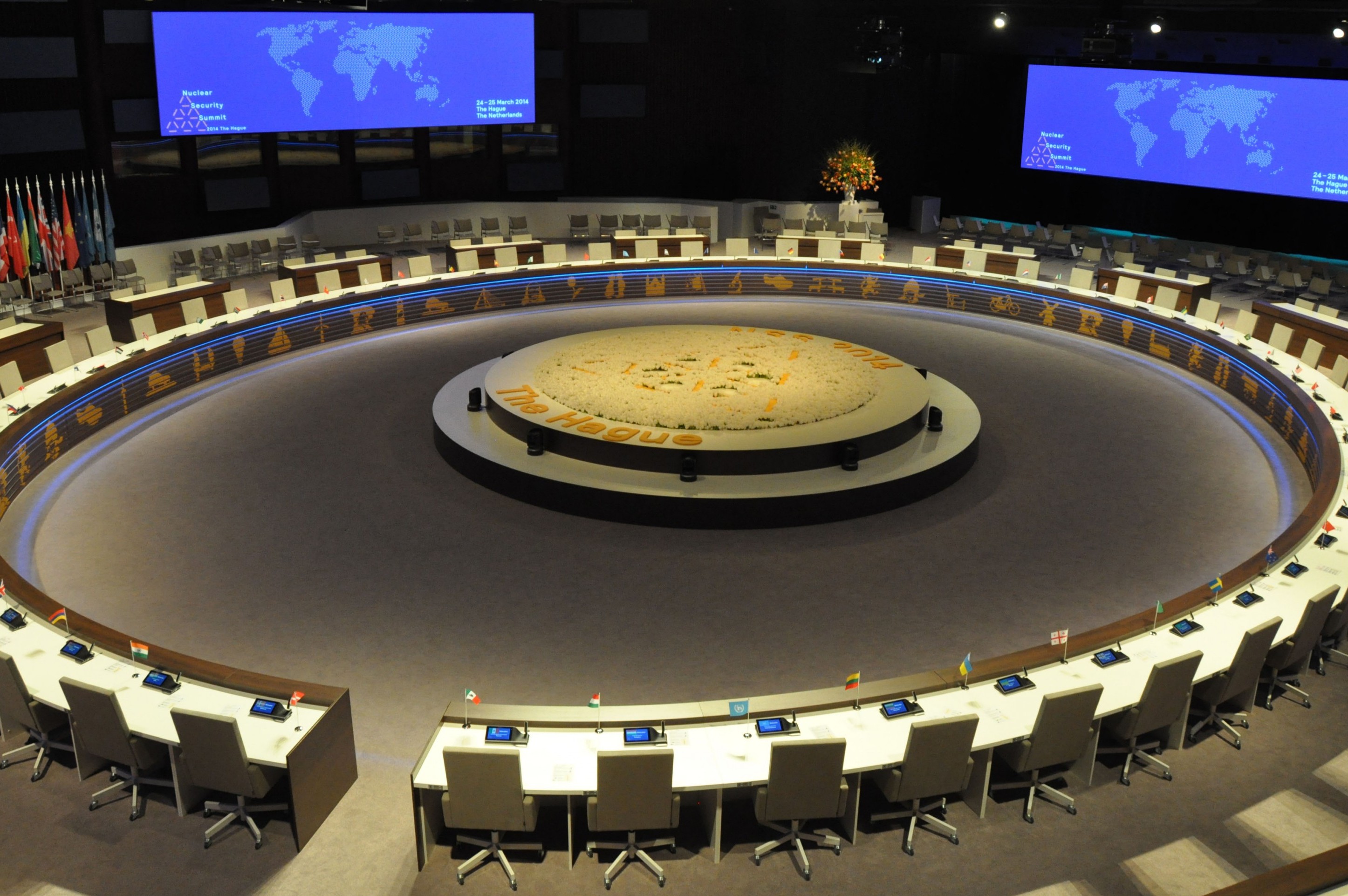
Previously we revealed the new and old technologies helping traditional venues remain competitive, here we look at the importance of a strong network architecture and the activity around audio for conferencing applications, writes David Davies.
Given the frequent requirement to combine contributions from ‘present’ and remote participants at an increasing number of events, it is no surprise that “enhanced video links” and high-quality recording capability are top priorities on many venues’ agendas for new-builds or refits.
For Gonsin – whose latest introductions into the market include the 10000 series dual-band and 30000 series FS-FHSS wireless conference systems – flexibility and extensive specifications are the name of the game. Factors that must be accommodated in new system design include “the adaptability of devices to the conference environment (for example, whether fixed/temporary, outdoor/indoor); adjustability of system capacity; and extension through other devices, for example personal mobile devices that can be integrated into the conference system,” says Gonsin marketing co-ordinator Li Peihua.
As “rich, multimedia meetings” become more commonplace, so to does the need for a “strong network architecture” as a crucial building block of the modern conference venue, says Televic product marketing specialist Bart De Ruyck, adding: “Surprisingly, this is often lackluster, even for larger venues. And even the most ambitious venue plans falter without great network connections.”
Once this is in place, a venue can set about accommodating a number of primary requirements – not least greater support for video and ease of connection for external devices. Successful use of video “requires displays of different sizes, multiple source selection, streaming options, recording capability and so on”, says De Ruyck. “Video simply increases productivity at the end of the day [since] participants see and hear more information, in higher resolutions, which enables better decisions. In addition, conference venues want to make the meeting information available to remote participants of all kinds. This requires seamless integration of multiple functions into one global solution.”
And whether devices are located in the same room or beyond, “flexibility to connect to third-party hardware and software is paramount. Any audio or video streams on a network need to be distributed to a variety of devices. Therefore, having the ability to communicate easily with other equipment makes a system much easier to use and maintain; and the same applies to software integration.”
Also not to be underestimated – particularly at a time when the breach of several large-scale corporate networks has been in the news headlines – is the whole issue of security. Vendors who can guarantee integrity of data will be particularly in demand, suggests De Ruyck: “Often overlooked in favour of more open system designs, security is today at the forefront in the larger debate on digital privacy. We go to great lengths, even on the system level, to ensure absolute security of conference data. No matter the size of the venue… confidentiality is always key.”
Enhanced sound and ease-of-use
ISE 2016 confirmed that, in particular, there is a significant amount of activity taking place around audio for conferencing applications. For example, Audio-Technica undertook its European launch of the ATUC-50 digital wired conferencing system at the show. “It’s designed to be simple to use and cost effective, but with premium sound quality and real flexibility. The ATUC-50 is aimed at small to medium-sized venues and delivers unrivalled intelligibility, browser-based control, and 1+3 language interpretation and wired language distribution,” says Audio-Technica conference business development manager EMEA Sandra Kellermann.
Also on display at ISE was Bosch Security Systems’ DICENTIS Wireless Conference System, which uses “state-of-the-art technologies, standard WiFi and smart wireless management to ensure interference-free (especially in environments with many WiFi networks) and highly flexible wireless conferencing. With minimal time required for set-up or breakdown, several events and meetings can take place in sequence, leading to the efficient use of meeting facilities. This new system is perfect for applications in multipurpose rooms and historical buildings where a flexible wireless solution offers significant advantages.”
Customers also have an increasingly broad choice of high-quality, aesthetically-discreet microphones. “Earthworks is finding more clients that are looking for the audio quality to match the unbelievable performance and resolution that video has achieved,” says Earthworks director of sales and marketing Megan Clifford, who highlights a recent addition to the line of Installed Sound Microphones of the IMB boundary mics: “At just 3.6cm in diameter and available in a black, white or silver finish, the IMB30 provides a low profile miking option that seamlessly integrates into the room’s design aesthetic.”
Elsewhere, devices that can be added quickly and easily to a network to allow the addition of other elements to a conference session are also in demand. Televic’s De Ruyck points to a newly developed Plixus Video IN & OUT Box that is designed “to make working with video child’s play. In essence, it is a little black box that allows you to inject or extract any video, presentations, streams, etc, anywhere on our network. Participants can easily cycle between all active video streams. Since the product is based on our new Plixus architecture, all you need is a Cat5e cable and an HDMI cable. Meanwhile, all video is transferred over the Plixus network in Full HD 1080p video.”
